How We Turn Water Points into Water Service
In recognition of World Water Monitoring Day on September 18th, we’re highlighting our monitoring system and the vital role it plays in supporting reliable water service.
At The Water Project, our work has always gone beyond installing water points. From the beginning, we’ve invested in monitoring. We are transparent about that side of our work, uploading data to our website every time our team monitors a water point. This data ensures that anyone can see when each water point was monitored and whether or not it was working (or functional). We’ve invested in monitoring because success isn’t about when a well is drilled or a rainwater tank is constructed; it’s about what happens every day after.
In recent years, our commitment to monitoring has only deepened. We have doubled down on repair and maintenance efforts and are shifting more and more of our focus to the post-implementation side of our work. In doing so, we are making an important shift: moving from building infrastructure to providing ongoing access to clean water. In other words, we’ve been working to provide reliable water service.
To understand what that truly means, let’s unpack both reliability and service.
What does “reliable water service” mean?
For us, reliability means two things: first, water must be available when it’s needed and in sufficient quantities. Second, we must make repairs quickly when breakdowns happen — as they inevitably will — so communities aren’t left without safe water.
Service is about responsiveness — listening when communities communicate concerns and showing up when help is needed. It means committing not only to providing access to water but also to sticking around to ensure that the water continues flowing. It’s about building trust that lasts long after the initial project is complete.
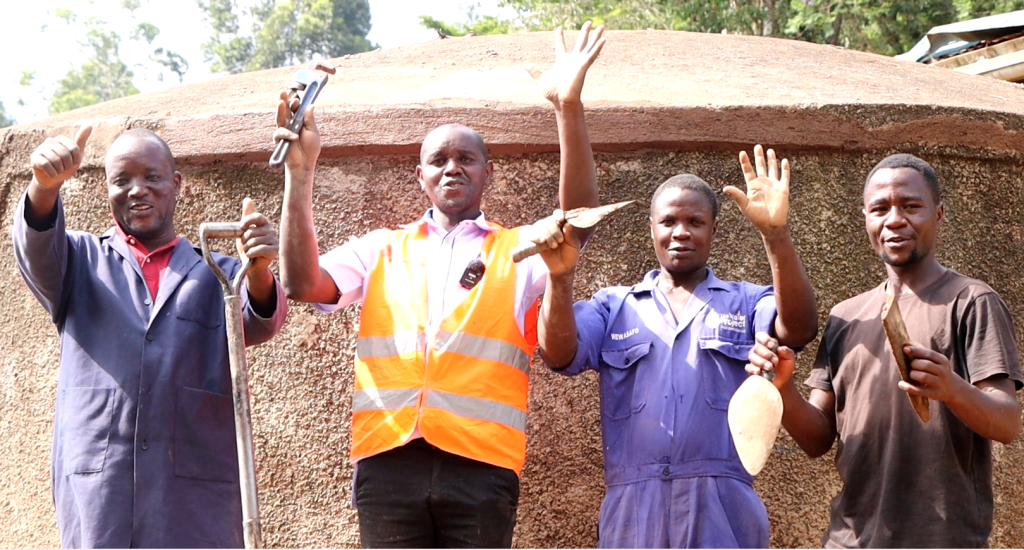
Together, these concepts of reliability and service define our model: ensuring that communities can depend on us for long-term reliable water access. Practically speaking, what this model looks like day in and day out is ongoing data collection, data analysis, and response systems that resolve problems when identified.
How do we ensure communities can rely on their water?
To live up to our definition of water service, we’ve developed a monitoring system that tells us what’s happening on the ground. That data drives our decisions, ensures accountability, and helps us deliver on the promise of reliability.
We collect monitoring data at least four times each year using a combination of in-person visits and phone calls. All data is captured on a digital monitoring platform called mWater. Although we collect data on a number of indicators, measuring functionality (whether or not the water point is working) is the heart of our monitoring work and what drives our approach to reliability.
We look at factors like 1) water availability, 2) time required to fill a 20-liter container, and 3) an inspection checklist to identify specific repairs needed. All of this data gives us a comprehensive picture of whether a water point is functional (fully working), partially functional (working but needs repair), or non-functional (not working).
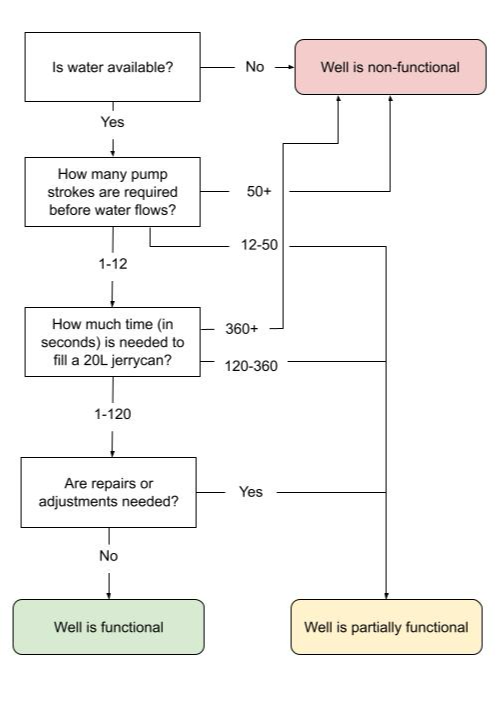
While the data itself is essential for decision-making, it’s important to note that field staff conducting monitoring visits are achieving more than data collection. Our ongoing monitoring activities have created invaluable trust with communities and schools. Providing a service is about standing with people over time, ensuring that what was built continues to meet their needs, and when we show up again and again to offer support, we are reinforcing our commitment to those values.
Measuring and tracking functionality helps us act quickly when something goes wrong and work to ensure that water remains available and reliable. We track each water point’s performance in terms of “downtime” — when it isn’t working (non-functional) — and “uptime” — when it is (functional). These measures come directly from our regular survey reports. If a survey shows a water point is down, it stays classified that way until another survey confirms it’s back up and running. These calculations help us identify gaps in service and celebrate our teams, who work hard to keep the water flowing. For a full description of how we calculate and use these metrics, see this blog by my colleague, Catherine McManus.
What happens when our team discovers an issue?
When a water point is partially functional or non-functional, teams on the ground investigate to identify the cause and possible solutions. This is a key part of our Operations and Maintenance (O&M) work. Across our program areas in Kenya, Uganda, and Sierra Leone, the specific approaches to O&M look a little different.
For example, our Western Kenya Regional Service Hub utilizes a dispatch model. Users call a toll-free number posted on the side of the hand pumps to report breakdowns, and mechanics are dispatched to the field for repairs.
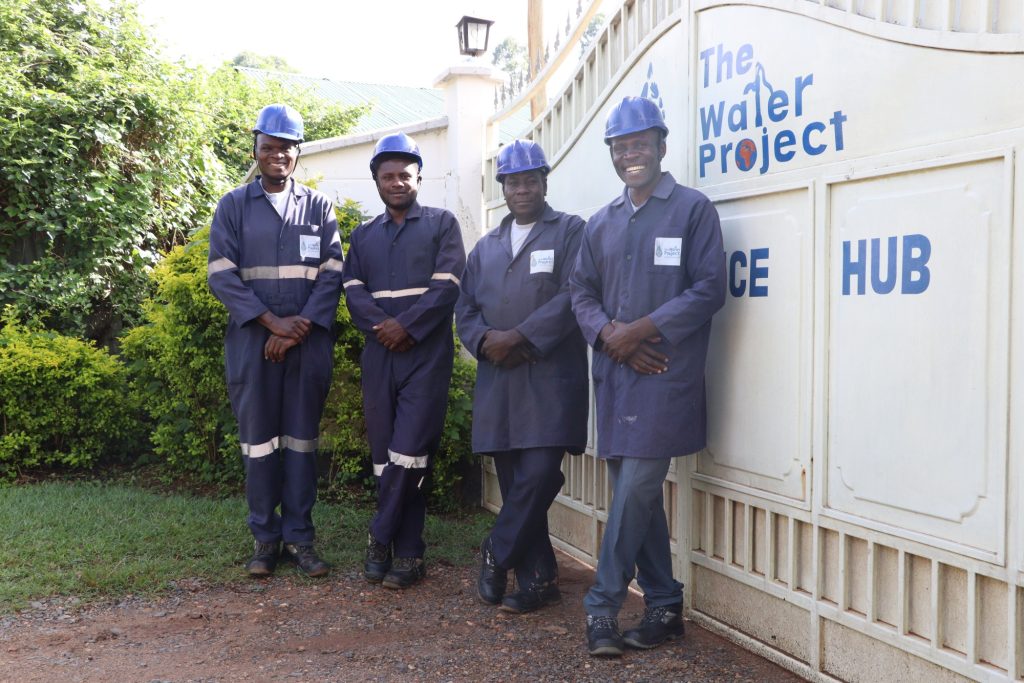
In Uganda, we partner with a local hand pump mechanics’ (HPM) association to maintain the water points and repair them when they break down. While each approach is carefully tailored to the local context, they’re all driven by one unified goal: to get broken-down water points back up and running as quickly as possible.
When seasonal dryness is the culprit (for example, a low water level in a protected dug well or a dry rainwater tank), a quick fix may not be available. However, we look for seasonal trends in the data and identify source types that are more sensitive to seasonal fluctuations in rainfall. The data helps us see when and where these water points are likely to fail and how we can plan to fill those gaps. While we can’t address seasonality with our O&M work, we have strived to reduce seasonal downtime through our larger programmatic strategy.
What part does water quality testing play in our monitoring and maintenance service?
Service also means a commitment to water quality. By monitoring water quality and responding to risks, we strive to ensure that reliable access is also safe access. Our team conducts water quality tests regularly (once or twice per year). When test results indicate a water quality concern, we utilize two approaches to ensure water safety.
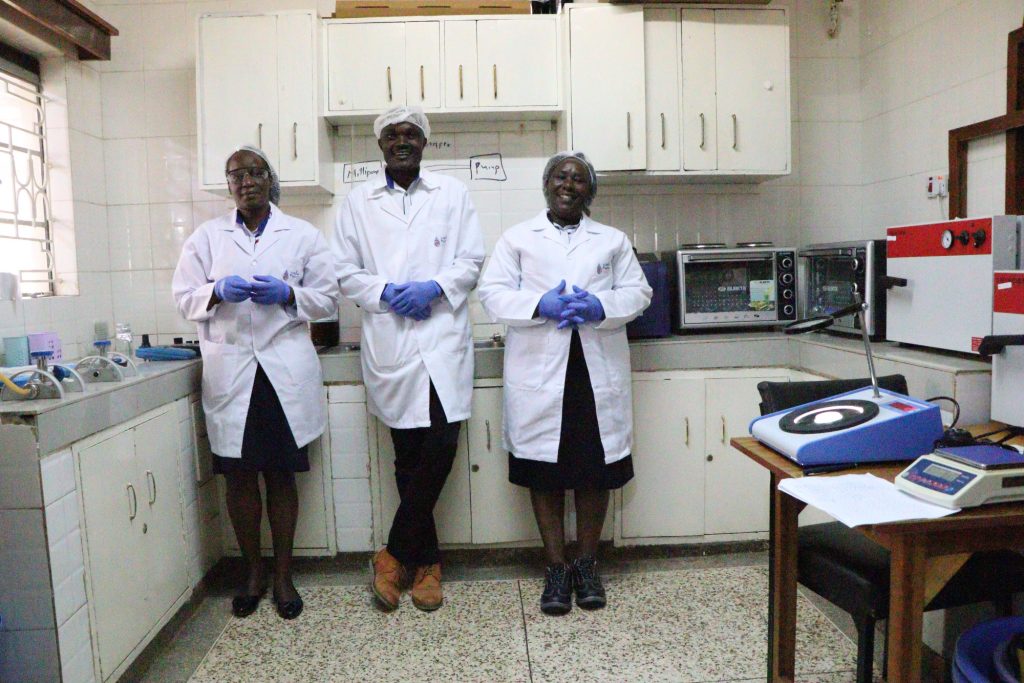
The first approach is to provide proactive treatment for sources with known water quality concerns. For example, our data indicated a persistent issue with protected springs in Western Kenya, especially in the rainy season, so we’ve partnered with Evidence Action to invest in chlorine dispensers for all of our springs. Thanks to these dispensers, which make it easy to add a dose of chlorine to water containers, clean water is always within reach, regardless of the most recent water quality test results.
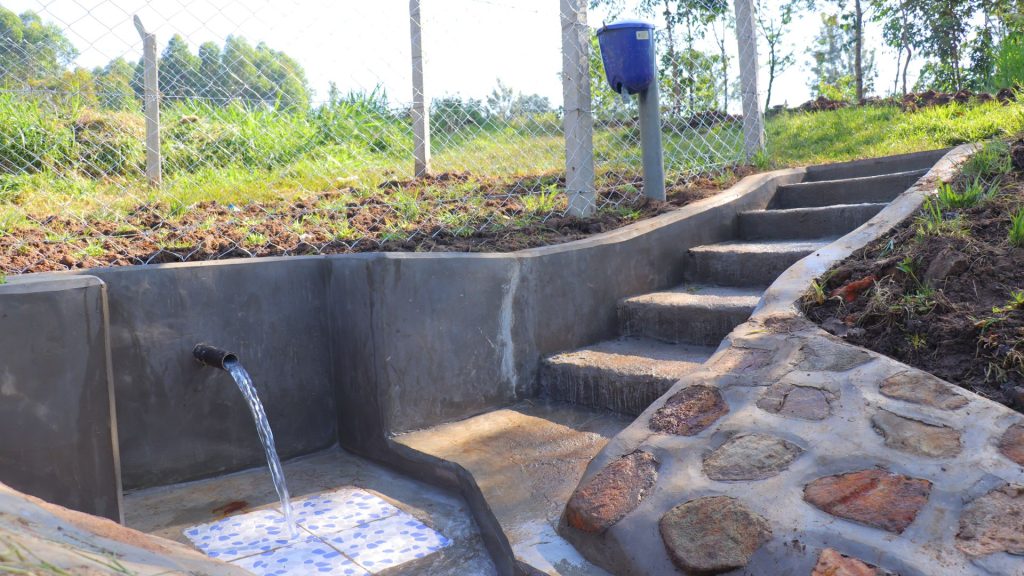
The second approach is to respond with a resolution step when water quality test results indicate a problem. This is our approach for protected dug wells and boreholes across our Western Kenya and Uganda program areas. When water quality testing reveals the contamination of one of those water points, our teams on the ground follow up with a shock chlorination protocol. In Sierra Leone, we use a combination of proactive and reactive measures, such as shock chlorinating protected dug wells and boreholes both on a regular schedule and when water quality tests reveal contamination.
Together, these proactive and responsive measures employed across our different program areas ensure that our commitment to service extends beyond keeping water flowing — it guarantees that the water communities rely on is safe.
How do we plan for the future of our water points?
For service to last, it must also be financially sustainable. Monitoring, maintenance, and water quality testing all come with ongoing costs, and one of our greatest challenges is ensuring these costs can be covered in the long term as we add to the number of projects ensuring access to safe water.
We have been testing out models of cost recovery that allow communities to share in service costs without creating barriers to access, but we haven’t solved this puzzle yet. By testing new approaches and learning from others in the sector, we are committed to building a model where safe, reliable water is not only delivered today, but is financially sustainable for generations to come.
As we work toward models of local cost recovery for post-implementation service, the reality is that reliable water access today is only possible because of the generosity of donors. While we dream of a day when donor funding is only needed for the project implementation side of our work and the water service side is sustained by local investment, achieving this kind of financial sustainability is a long-term goal.
Donor support will always be integral to our work, especially as we strive to build more financial sustainability into our program. We need donors to continue to walk with us on this journey, ensuring that communities have access to safe and reliable water now, while we strive to build a financially sustainable service model that endures for generations.
Home More Like ThisTweet